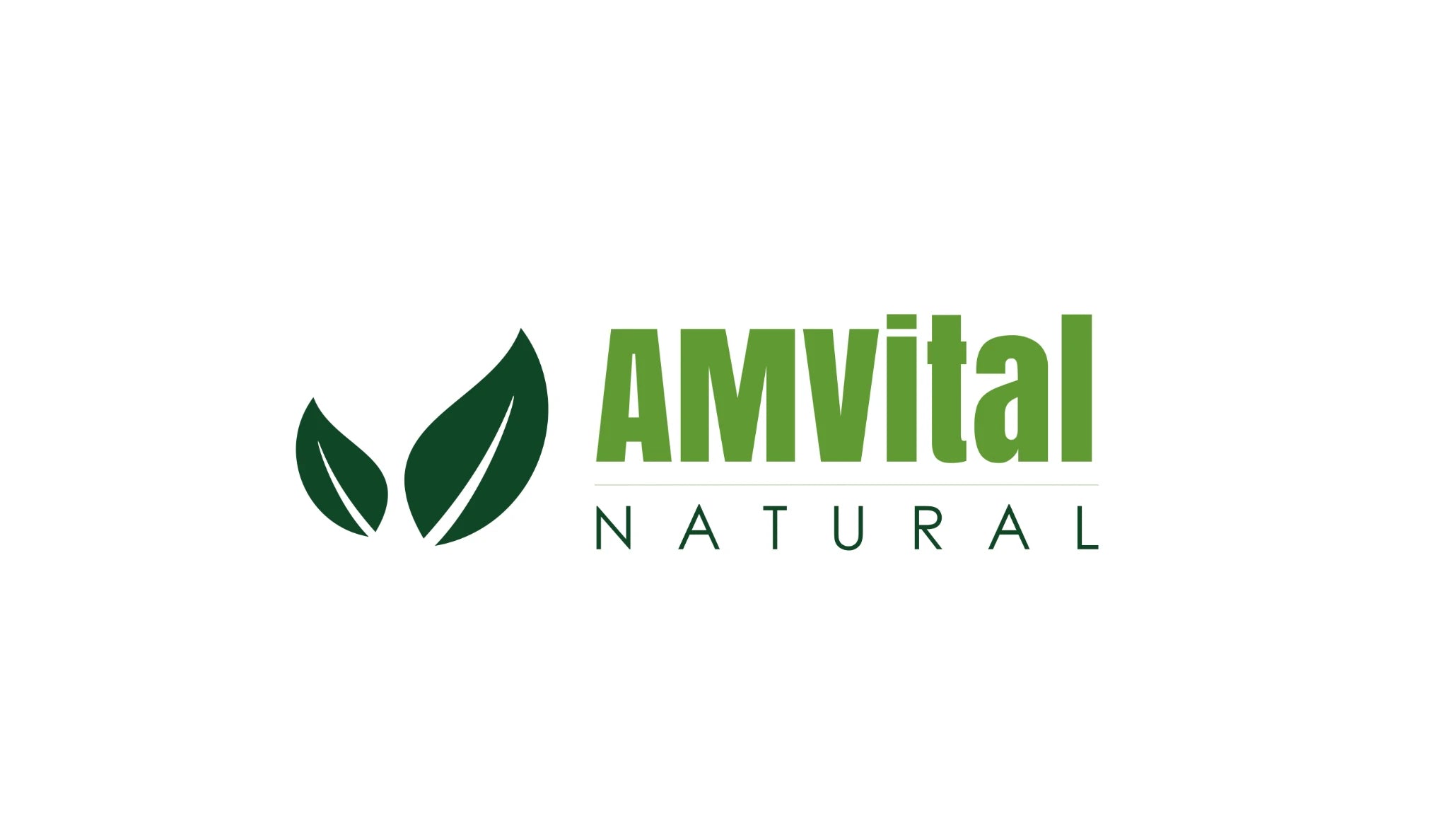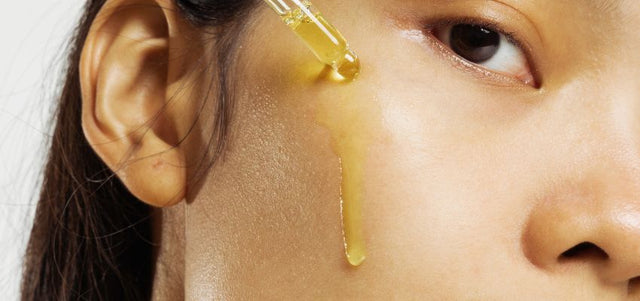Walk into any drugstore and you're bombarded with choices. Cleansers, soaps, face washes, bars, gels, creams. All claim to clean your skin. But what's the real difference?
The cleanser vs soap debate confuses millions. You might be using the wrong one right now. This choice affects your skin's health more than you realize. The wrong product can damage your skin barrier, cause breakouts, and accelerate aging.
In this guide, we'll explain exactly what sets cleansers and soaps apart. You'll discover which one suits your skin type. Most importantly, you'll learn how to make the right choice for healthier, happier skin. Ready for clarity? Let's begin.
🔬 The Science of Cleaning
How both work: Both cleansers and soaps use surfactants—molecules with one end that attracts oil and another that attracts water. This allows them to lift dirt, oil, and makeup from your skin and rinse them away.
The critical difference is pH and additional ingredients. Your skin has a natural pH of 4.5-5.5 (slightly acidic). Soap has pH 9-10 (alkaline), while cleansers are pH-balanced at 5-6. This seemingly small difference creates dramatically different results for your skin's health.
What Exactly Is Soap?
Before we compare, let's understand what soap actually is. This knowledge helps you make better choices.
How Soap Is Made
Traditional soap comes from saponification—a chemical reaction between fats and alkali:
- Fats or oils: Animal fats or plant oils provide the base
- Alkali (lye): Sodium hydroxide or potassium hydroxide
- Chemical reaction: Heat triggers saponification
- Result: Soap molecules that clean but remain alkaline
Why Soap Is Alkaline
Soap's alkaline nature comes from the lye used in production. Even though lye is neutralized during saponification, the final product remains basic with pH 9-10.
This high pH effectively cleans by breaking down oils. But it also disrupts your skin's acid mantle—the protective layer keeping bacteria out and moisture in.
Types of Soap
Not all soaps are created equal:
- Traditional bar soap: Classic alkaline soap
- Beauty bars: Lower pH, added moisturizers
- Syndet bars: Synthetic detergent bars (technically not soap)
- Natural soaps: Made with plant oils, still alkaline
Important Note: "Natural" or "organic" soap is still soap. Natural ingredients don't change the fundamental pH issue. Even natural soaps disrupt your skin's pH balance.
What Exactly Is a Cleanser?
Cleansers are specifically formulated for facial skin. They're designed to clean without the harsh alkalinity of soap.
How Cleansers Are Made
Cleansers use synthetic detergents with added beneficial ingredients:
- Synthetic surfactants: Gentle cleaning agents
- pH adjusters: Keep formula at skin-friendly 5-6
- Moisturizers: Glycerin, hyaluronic acid, oils
- Active ingredients: Targeted treatments built in
Why Cleansers Are Better for Face
Facial skin differs dramatically from body skin:
- Thinner: More delicate and sensitive
- More sebaceous glands: Produces more oil
- More exposed: Faces environmental stressors daily
- More visible: Damage shows immediately
Cleansers respect these differences with gentler formulations.
Types of Cleansers
Different formulations suit different needs:
- Gel cleansers: Best for oily skin, deep cleaning
- Cream cleansers: Best for dry skin, hydrating
- Foam cleansers: Lightweight, good for normal/combo
- Oil cleansers: Remove makeup, double cleansing
- Micellar water: Gentle, no-rinse option
The Critical Differences: Soap vs Cleanser
Now let's compare them directly across key factors. Understanding these differences helps you choose wisely.
| Factor | Soap | Cleanser |
|---|---|---|
| pH Level | 9-10 (Alkaline) | 5-6 (Skin-balanced) |
| Stripping Effect | Removes all oils, including good ones | Cleanses while preserving natural oils |
| Skin Barrier Impact | Disrupts acid mantle | Maintains barrier function |
| After-Feel | Tight, squeaky, dry | Clean but comfortable |
| Added Benefits | Just cleaning | Moisturizing, treating, protecting |
| Price | Generally cheaper | Higher investment |
| Best For | Body (except sensitive areas) | Face and delicate skin |
The pH Problem Explained
This deserves special attention because it's the most important difference. Your skin's pH of 4.5-5.5 isn't random—it's crucial for health.
When soap raises your skin's pH to 9-10:
- Barrier disruption: Protective layer breaks down
- Moisture loss: Water evaporates more easily
- Bacterial growth: Bad bacteria thrive in alkaline conditions
- Sensitivity increase: Skin becomes more reactive
- Longer recovery: Takes hours for pH to normalize
Your skin works overtime to restore its natural pH after soap use. This constant disruption and recovery cycle damages your skin long-term.
The "Squeaky Clean" Trap: That tight, squeaky feeling after washing with soap? It's not cleanliness—it's your skin crying for help. Your natural oils are completely stripped, and your acid mantle is disrupted. This feeling should be your signal to switch to a gentler cleanser.
Which One for Your Skin Type?
Your skin type determines which product works best. Let's break this down by type.
For Dry Skin
Winner: Cream Cleanser
Dry skin needs maximum moisture retention. Soap strips essential oils, making dryness worse. Cream cleansers clean while depositing hydrating ingredients.
Look for cleansers with:
- Hyaluronic acid for hydration
- Glycerin to attract moisture
- Natural oils to nourish
- No harsh sulfates that strip
Avoid: All traditional soaps, foaming cleansers with sulfates, anything that makes skin feel tight.
For Oily Skin
Winner: Gel Cleanser
Many people with oily skin use harsh soap, thinking it controls oil. This backfires. Stripping all oil triggers your skin to produce more oil in compensation.
Gel cleansers clean thoroughly without over-stripping:
- Control excess oil gently
- Don't trigger rebound oil production
- Often include salicylic acid for pores
- Feel refreshing without being harsh
The AMVital Turmeric Gel Cleanser balances oil while fighting acne. It cleans deeply without triggering more oil production.
Avoid: Harsh soaps that strip (triggers more oil), heavy cream cleansers (too rich), anything with "squeaky clean" finish.
For Combination Skin
Winner: Foam or Gel Cleanser
Combination skin needs balance. You have both oily and dry zones. Soap strips dry areas too much. Heavy creams are too rich for oily zones.
Gentle foam or gel cleansers work everywhere:
- Clean oily T-zone effectively
- Don't over-dry cheek areas
- Maintain balanced moisture levels
- Work well morning and night
Avoid: Traditional soap (too harsh for dry areas), heavy creams (too much for oily zones).
For Sensitive Skin
Winner: Gentle, Fragrance-Free Cleanser
Sensitive skin reacts to everything. Soap's high pH is extremely irritating. Even many cleansers with fragrances or harsh surfactants cause problems.
Choose cleansers that are:
- Fragrance-free (fragrances irritate)
- Minimal ingredients (less reaction risk)
- Dermatologist-tested formulas
- Explicitly labeled "for sensitive skin"
Avoid: All soaps (too alkaline), fragranced anything, essential oils (common irritants), products with long ingredient lists.
For Acne-Prone Skin
Winner: Treatment Cleanser
Acne-prone skin needs active ingredients, not just cleaning. Soap can't deliver treatment while cleansing. It might even worsen acne by disrupting your barrier.
Look for cleansers with:
- Salicylic acid: Unclogs pores
- Turmeric: Natural antibacterial properties
- Gentle exfoliants: Remove dead cells
- Non-comedogenic formula: Won't clog pores
Avoid: Harsh soaps (damage barrier, worsen acne), physical scrubs with beads (cause micro-tears), anything with comedogenic oils.
For Mature/Aging Skin
Winner: Cream or Oil Cleanser
Mature skin produces less oil naturally. It's more delicate and prone to dryness. Soap accelerates aging by constantly disrupting the barrier.
Nourishing cleansers help aging skin:
- Maintain moisture levels
- Support barrier function
- Often include anti-aging ingredients
- Feel luxurious and comfortable
Avoid: All soaps (too drying), foaming cleansers with sulfates, anything that strips oil.
💛 From Our Community
"I used soap on my face for years because it was 'natural.' Once I switched to a proper gel cleanser, my skin transformed. No more tightness, no more breakouts from over-drying. Wish I'd known this sooner!"
— Marcus D., verified customer
Can Soap Ever Be Used on Face?
This is a common question. The honest answer: it depends on the "soap" and your skin.
When Soap Might Be Acceptable
Some situations allow gentle soap use:
- Syndet bars: These aren't true soap—they're pH-balanced
- Oily, resilient skin: Can tolerate occasional soap use
- Body use: Body skin handles soap better than facial skin
- Emergency situations: When nothing else is available
Gentle Soap Options
If you prefer bar format, choose these over traditional soap:
- Syndet bars: Dove, Cetaphil gentle bars
- pH-balanced bars: Specifically formulated for face
- Specialty bars: Like turmeric soap bars designed for face and body
These look like soap but are formulated more like cleansers. They clean without the harsh alkalinity.
When Soap Should Never Touch Your Face
Absolutely avoid soap if you have:
- Dry or sensitive skin (will worsen both)
- Eczema or rosacea (triggers flares)
- Damaged moisture barrier (prevents healing)
- Active acne with inflammation (increases irritation)
Critical Warning: If you currently use soap on your face and experience tightness, dryness, redness, or increased breakouts, stop immediately. Switch to a proper facial cleanser. Your skin is telling you it can't handle soap's alkalinity.
How to Choose the Right Cleanser
Now that you understand the difference, here's how to select your perfect cleanser.
Read the Ingredient List
Look for these beneficial ingredients:
- For hydration: Hyaluronic acid, glycerin, aloe vera
- For acne: Salicylic acid, turmeric, tea tree oil
- For brightening: Vitamin C, niacinamide, turmeric
- For anti-aging: Peptides, antioxidants, gentle exfoliants
Avoid these red flags:
- Sodium lauryl sulfate (SLS): Too harsh, strips skin
- High alcohol content: Drying and irritating
- Synthetic fragrances: Common irritants
- Soap as first ingredient: It's basically soap, not cleanser
Check the pH
Some products list pH on packaging. Look for:
- Ideal range: 4.5-6.0
- Acceptable: 4.0-7.0
- Avoid: Anything above 7.0
If pH isn't listed, you can test with pH strips at home.
Consider Your Routine
Match cleanser to your needs:
- Wear makeup: Need oil cleanser or micellar water first
- Use actives: Choose gentle cleanser that won't interfere
- Sensitive skin: Minimal ingredients, fragrance-free
- Active lifestyle: Need effective but gentle cleanser
Try Before Committing
Test new cleansers properly:
- Patch test first: Inside elbow or behind ear
- Use for two weeks: Give skin time to adjust
- Observe results: How does skin feel? Look? Behave?
- Make decision: Keep or try another
Common Mistakes When Choosing Face Wash
Avoid these errors that lead to poor results.
Mistake #1: Choosing Based on Price Alone
Cheap isn't always bad, and expensive isn't always good. Judge by ingredients and formulation, not price tag.
✓ The Fix:
Read ingredients. A mid-priced cleanser with quality ingredients beats an expensive one with fillers and fragrances.
Mistake #2: Using Body Soap on Face
Body skin is thicker and less sensitive. Face skin needs gentler care. Body soap is always too harsh for facial skin.
✓ The Fix:
Invest in a proper facial cleanser. Your face deserves specialized care. Use body soap only on your body.
Mistake #3: Over-Cleansing
More washing doesn't equal cleaner skin. Over-cleansing strips your barrier, causing problems even with gentle cleansers.
✓ The Fix:
Cleanse twice daily maximum: morning and night. If skin feels tight or dry, reduce to once daily (evening only).
Mistake #4: Ignoring Your Skin's Signals
If your cleanser causes tightness, redness, increased oil, or breakouts, it's wrong for you. Listen to your skin.
✓ The Fix:
Switch immediately if skin protests. Try gentler formulations until you find the right match.
Mistake #5: Not Adjusting for Seasons
Your skin changes with weather. Winter dryness needs different care than summer oiliness.
✓ The Fix:
Have two cleansers: lighter gel for summer, richer cream for winter. Switch based on how your skin feels.
The Right Cleansing Technique
Having the right product is only half the battle. Technique matters just as much.
Perfect Cleansing Steps
- Wet face with lukewarm water: Not hot (strips oils) or cold (doesn't clean well)
- Apply small amount: Dime-sized is enough for whole face
- Gentle circular motions: 30-60 seconds, no scrubbing
- Rinse thoroughly: No residue should remain
- Pat dry gently: Don't rub vigorously
- Follow with toner immediately: Toner balances pH and preps for products
Double Cleansing Method
For those who wear makeup or sunscreen:
- First cleanse: Oil-based cleanser or micellar water removes makeup/sunscreen
- Second cleanse: Water-based cleanser removes remaining impurities
This ensures complete cleaning without harsh scrubbing.
Frequency Guidelines
How often to cleanse depends on your skin:
| Skin Type | Morning | Evening |
|---|---|---|
| Normal | Water or gentle cleanser | Full cleanse |
| Dry | Water only | Gentle cleanser |
| Oily | Gentle cleanser | Full cleanse |
| Combination | Water or gentle cleanser | Full cleanse |
| Sensitive | Water only | Gentle cleanser |
✅ DO These
- Use lukewarm water: Protects barrier
- Be gentle: No harsh scrubbing
- Rinse thoroughly: Remove all product
- Pat dry: Gentle on skin
- Follow with toner: Balances pH
- Choose pH-balanced: Respects skin
- Listen to skin: Adjust as needed
❌ DON'T Do These
- Use hot water: Strips oils
- Scrub hard: Damages barrier
- Use soap on face: Too alkaline
- Over-cleanse: Twice daily max
- Rub dry: Causes irritation
- Skip toner: Misses pH balance
- Ignore warnings: Tightness means stop
Frequently Asked Questions
Can I use regular soap on my face?
You can, but you shouldn't. Regular soap has high pH (9-10) that disrupts your skin's natural pH (4.5-5.5). This causes dryness, irritation, and weakened barrier function. Facial skin is more delicate than body skin and needs gentler, pH-balanced cleansers specifically formulated for the face.
What's the main difference between cleanser and soap?
The main difference is pH level and formulation. Soap is alkaline (pH 9-10) and made through saponification. Cleansers are pH-balanced (pH 5-6), contain synthetic detergents, and include moisturizing ingredients. Cleansers clean without stripping natural oils, while soap can disrupt your skin's protective barrier.
Are cleansers better than soap for all skin types?
Yes, for facial skin. Cleansers suit all skin types better because they're specifically formulated for delicate facial skin. Dry skin needs cream cleansers, oily skin benefits from gel cleansers, sensitive skin requires gentle formulas. Even oily skin shouldn't use harsh soap—it triggers more oil production.
Why does soap make my face feel tight and squeaky clean?
That tight, squeaky feeling means soap stripped your skin's natural oils and disrupted the moisture barrier. It's not cleanliness—it's damage. Your skin should feel clean but comfortable after washing, not tight or dry. This tight feeling signals you need a gentler, pH-balanced cleanser instead.
Can I use cleansers on my body and soap on my face?
No, use the opposite. Use cleanser on your face (delicate skin needs gentle care) and soap on your body (thicker skin tolerates soap better). Some gentle bar soaps work for both face and body, but typical body soap is too harsh for facial skin. Always use facial-specific products on your face.
Make the Right Choice for Your Skin
The cleanser vs soap debate has a clear winner for facial skin. Cleansers respect your skin's natural pH and barrier function. They clean effectively while delivering additional benefits.
Soap has its place—on your body. But facial skin is too delicate for soap's harsh alkalinity. That tight, squeaky feeling isn't cleanliness—it's your skin crying for help.
Choose a cleanser matched to your skin type. Use it with proper technique. Follow with appropriate skincare. Your skin will thank you with health, clarity, and comfort.
The right cleanser isn't a luxury—it's a necessity. Invest in your skin's health. The results speak for themselves.
✨ Here's to your golden glow! ✨
Experience the Cleanser Difference
Switch to a pH-balanced cleanser designed for your skin type. Feel the difference gentle, effective cleansing makes for your skin's health and appearance.
Shop Turmeric Gel CleanserQuestions? Contact us or email support@amvital.com







